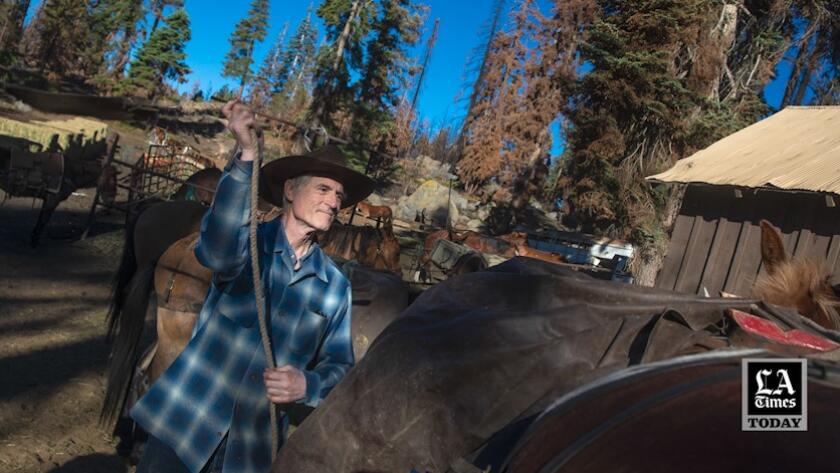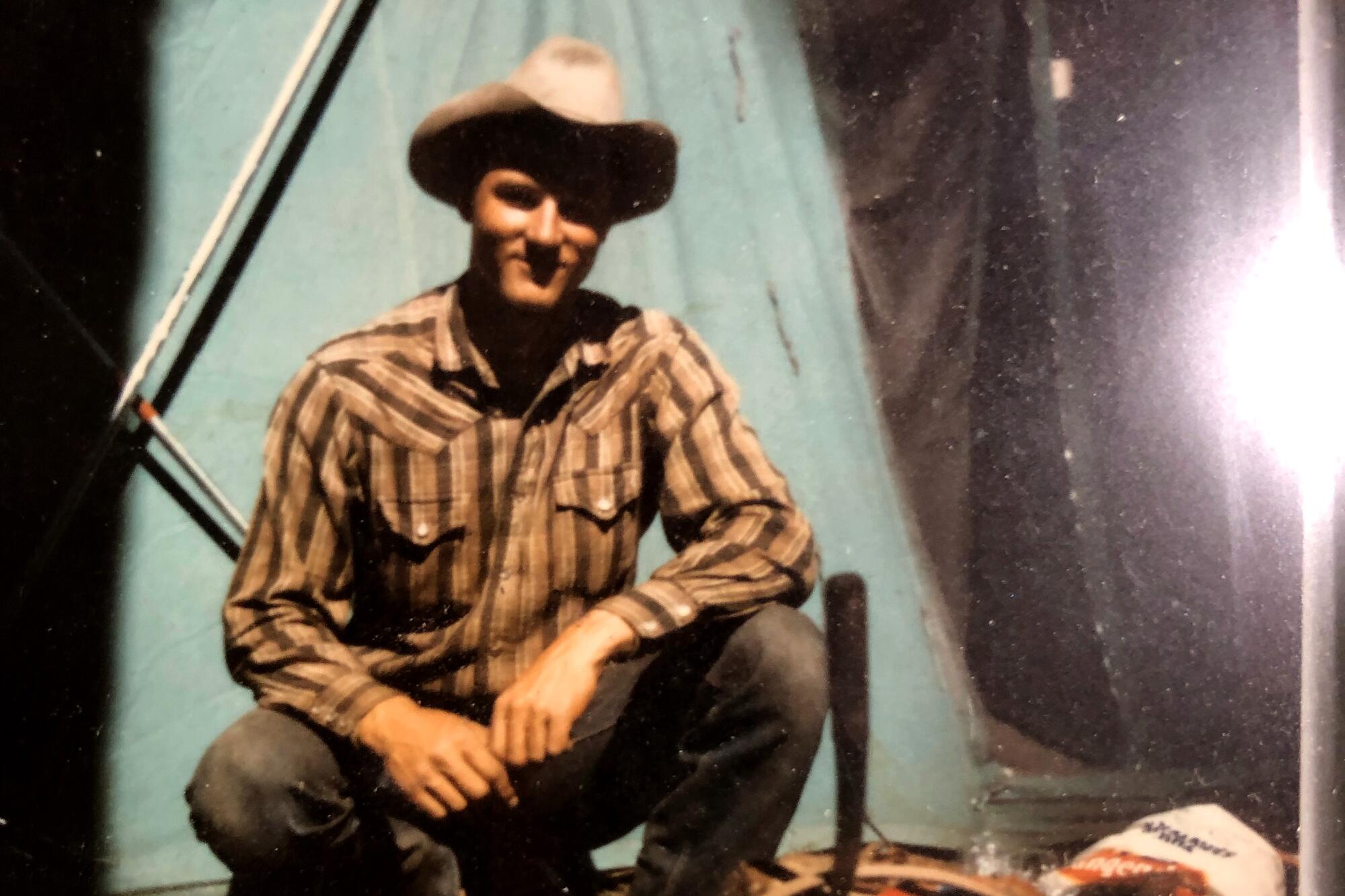
GOLDEN TROUT WILDERNESS, Calif. — We clambered loudly up the miserable incline, horses stumbling as their shoes slid on the ladder of rocks that took us up and away from the Kern River.
“Devil’s Stairway,” Chelsea McGlyn, the wrangler on this expedition, said over her shoulder, twisting around in the saddle.
Was it such a brutal trail when I made my first trip here almost 60 years ago? Memory is too fragile to say definitively.
What I can never forget from that day was the cowboy on the fast paint horse who got stuck behind me and had to eat my dust — kicked up by a horse and three mules — until the trail leveled out.
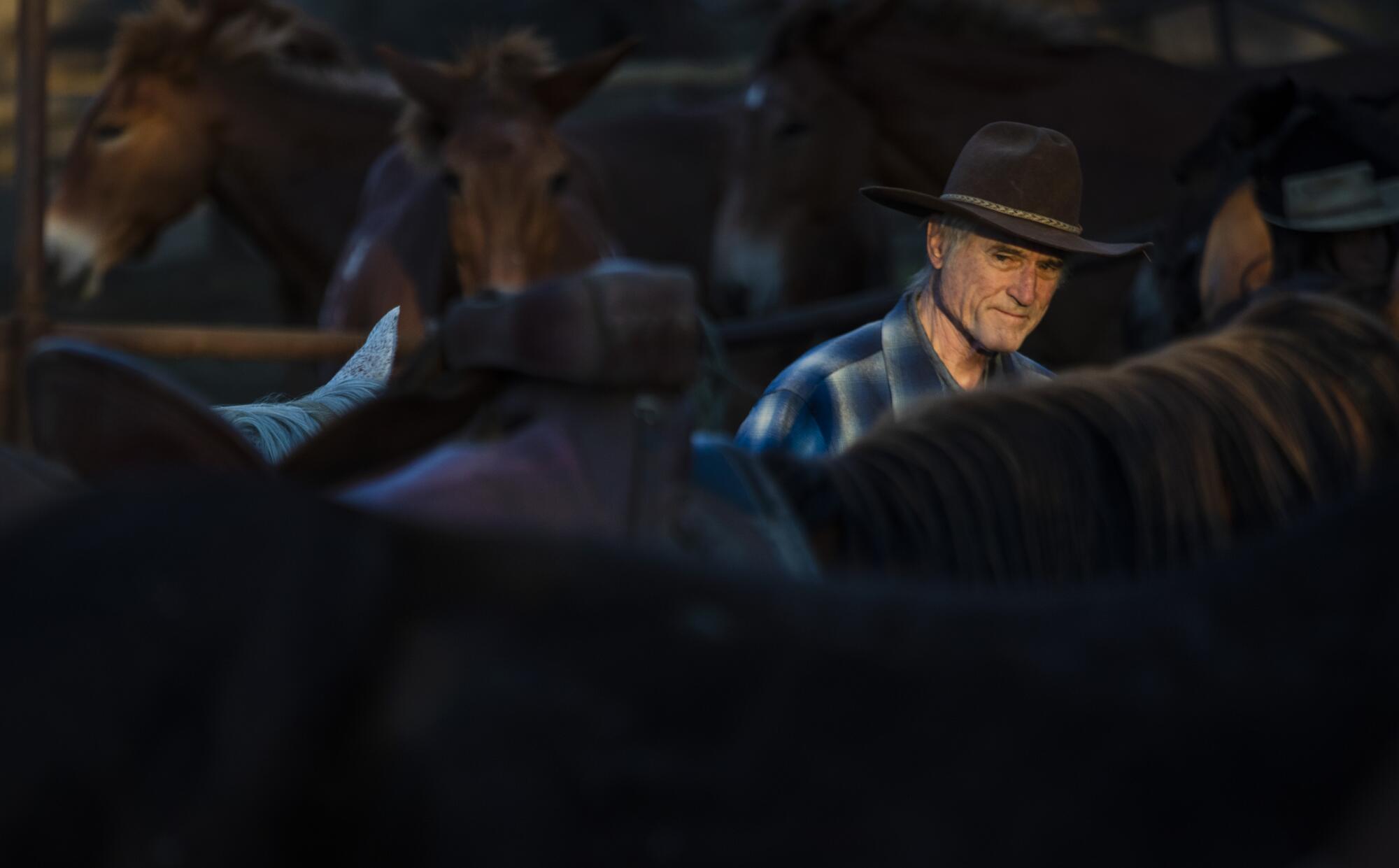
He paused and introduced himself as Sterling Grant, farmer from the San Joaquin Valley town of Wasco, and invited the 16-year-old wannabe cowboy from Los Angeles to mosey up the river and visit him in the morning.
“I’ll be at Funston,” he said, and pulled away at a near trot.
The encounter, in 1963, was a fulcrum in my life. The three-mile ride from my camp to Funston Meadow awakened a lifetime connection to the Upper Kern River Canyon, a magical place of 2,000-foot-tall granite escarpments, impossibly angled rock taluses, boulders as big as houses launched by glaciers eons ago and stands of tamarack pine and fern.
Through it runs the Kern, not mighty by any measure, but seductive in every transition of color, shape and sound as the river moves through deep pools, wide riffles and violent cascades, a cinema known only to the few who would bear 28 miles of dust and sweat, on foot or horseback, to reach it.
The three granite towers looming over the entrance to Sequoia National Park became a spiritual foundation, the source of my understanding of my place in time. Just upriver, Funston became my temporal base where I learned the hard rules of self-reliance amid a setting of raw beauty and rough-hewn companions.
Over four summers, I became a seasoned mule hand, inured to physical hardship and at ease with the speech patterns and values of San Joaquin Valley cattlemen.
I vacillated between city and Sierra, finally settling on city in part because of the Watts riots of 1965. Though not the proximate cause, the uprising became a homeward pull, a call of distress from a city that never had seemed to me as vast as it was nor as damaged as it had become. I felt I had to return to the city and help it heal.
I also found love, started a family, became a newsman and have been one ever since, chronicling my city through 50 years of changes that have all but eclipsed the freedom I and my friends from Nightingale Junior High School took as a natural gift when we rode the bus from Highland Park to the Coliseum on Dodger game nights.
No matter how grim the events, I have always taken strength from the memory of places that cannot be erased. Whatever happens to the city, Golden Trout Creek (I say “crik”) will always cascade 300 feet over Volcano Falls on its descent to the manzanita flat where I waded up to my waist against a ripping current on that first time wrangling horses and mules.
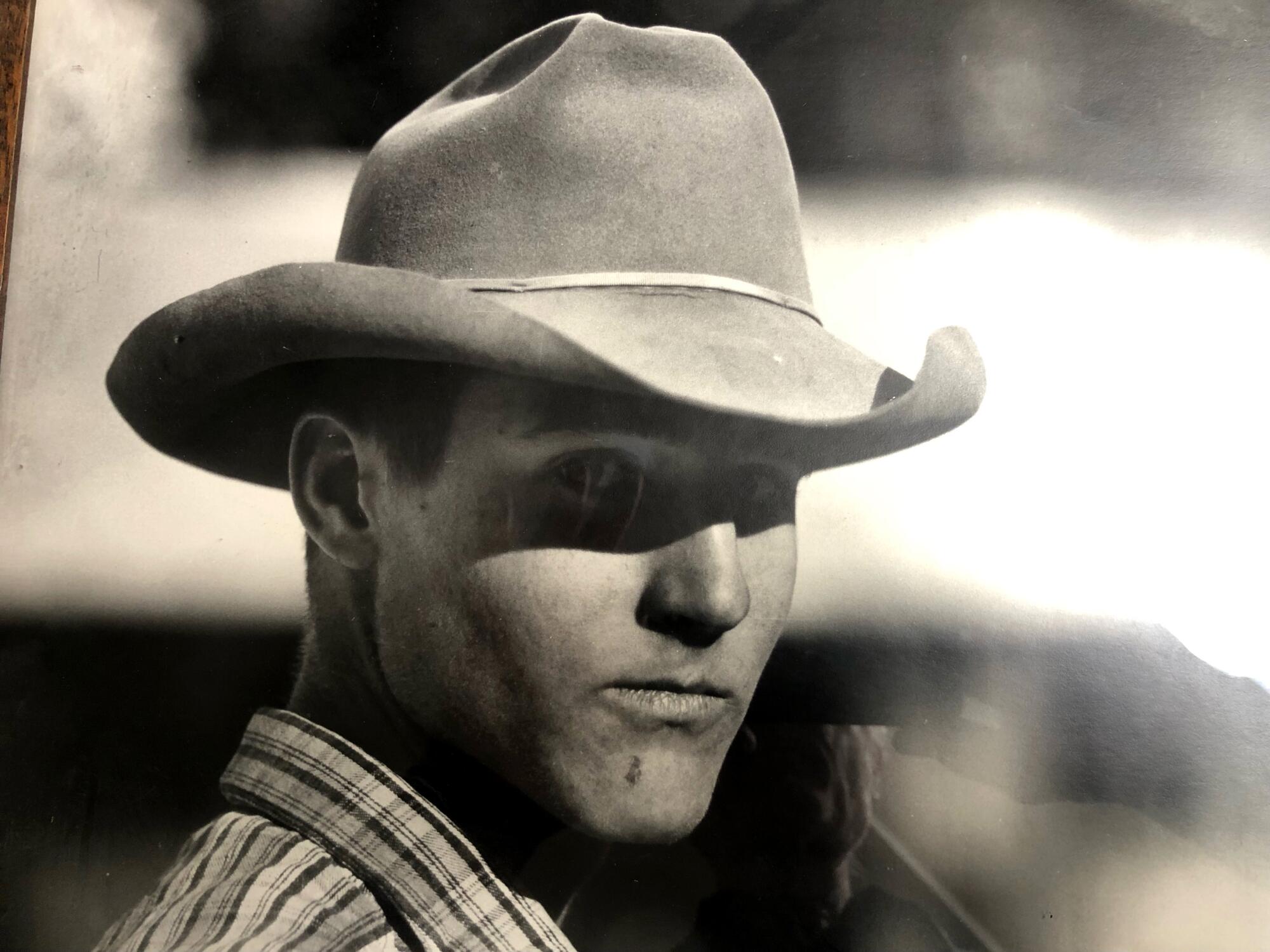
I always knew I would return to the gorge. I never thought it would take so long. Finally, it was the awareness that my physical capacity for the journey was not infinite that overruled inaction.
This summer I came back, not as that boy whose bookish passion for Henry David Thoreau and Jedediah Smith somehow morphed into a real-life fantasy job, but as a 75-year-old reasonably versed in the changes of the time — both climate and culture. Would the mountains have changed in my absence? Might my own perceptions have changed too?
Some of the answers I already knew. Sadly for me, Woody’s Pack Station, the Depression-era compound of wood shanties that had been our base, was gone, bypassed by the logging roads that had shrunk the backcountry by several miles.
The yellow Angora Mountain, the blanched twin Coyote Peaks and the purple cup of Farewell Gap, the source of the Little Kern River, filled me with flashbacks of awe and angst.
— Doug Smith
More happily, the declaration of the Golden Trout Wilderness Area in 1978 banished backcountry motorcycles from vast areas of Sequoia National Forest. Nothing but a stray spark plug or two would be left of the devilish machines that tore up the trails, annoyed the livestock and fouled the air with their sound.
I also knew that the Castle fire had swept over my corner of the Western Sierra in 2020. Still, I was unprepared for the epochal change I witnessed on the last leg of my five-hour drive from L.A. ascending the 27 miles of switchbacks up the Tule River Canyon on Highway 190. A ponderosa pine and cedar forest was reduced to a landscape of charcoal sticks.
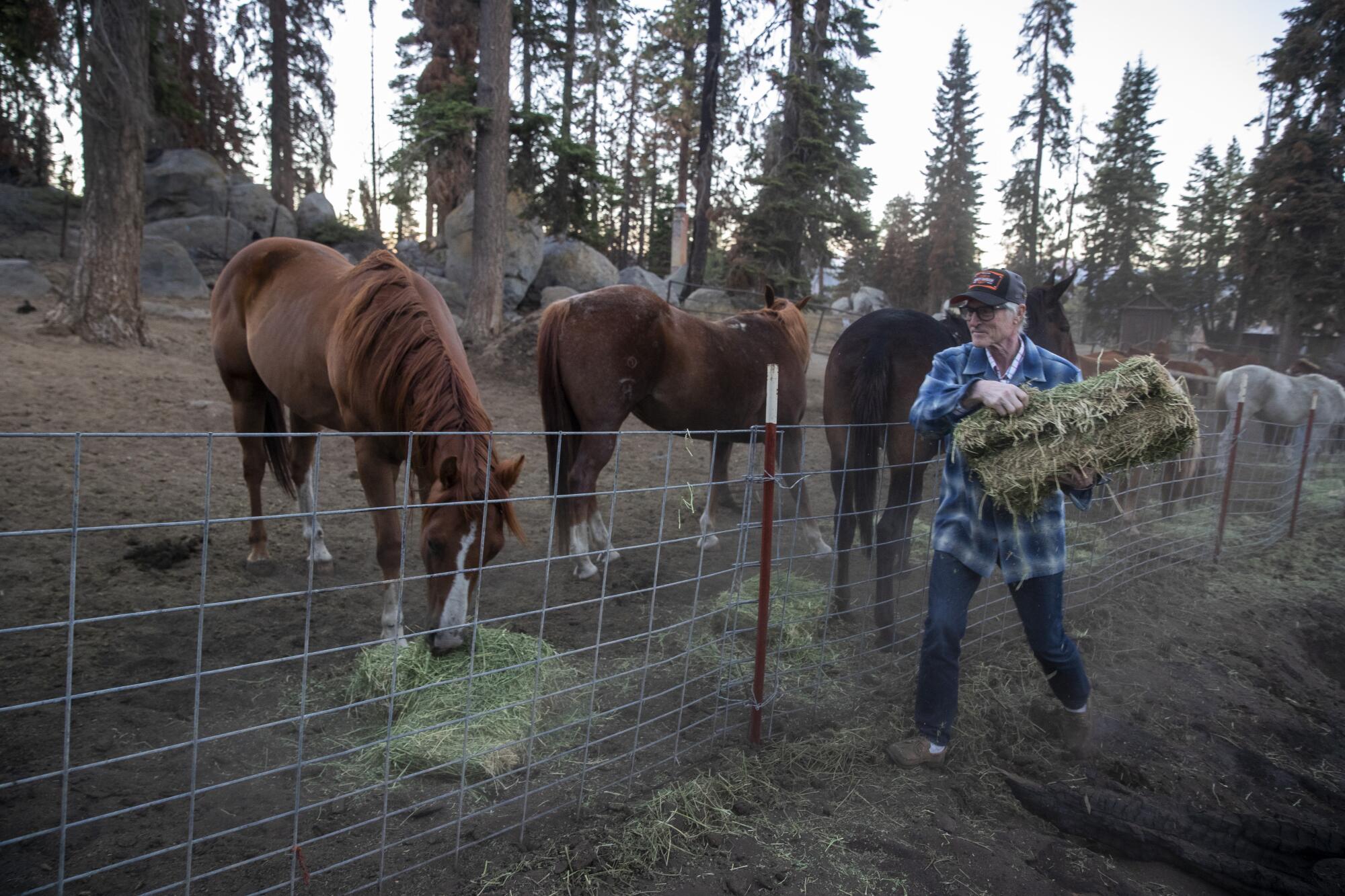
Intuitively, I reached the conclusion — one I later learned was supported in a review of studies by the nation’s forest managers and experts — that the conifer forest that had inhabited these slopes for millennia could be gone forever.
Golden Trout Pack Station, the new base camp at the end of a three-mile dirt road, had not escaped, either. Only a concrete slab and chimney remained of the lodge that had anchored a small settlement of tack sheds and guest cabins. Owner Steve Day invited me into the trailer that was his temporary home while waiting for Forest Service permits to rebuild. We clicked glasses of Jim Beam, and he told how he rallied his fellow horsemen from the valley to trailer dozens of horses and mules to safety as the Castle fire made its inexorable approach to his establishment.
Day was scratching his way back with a depleted crew of wranglers and a wounded backcountry.
“It sucks,” Day said, but then added about the burned-out landscape: “It’s a different kind of beauty. If we get mad at it, all’s we’re going to do is be mad. We just got to be happy we’re up here.”
::
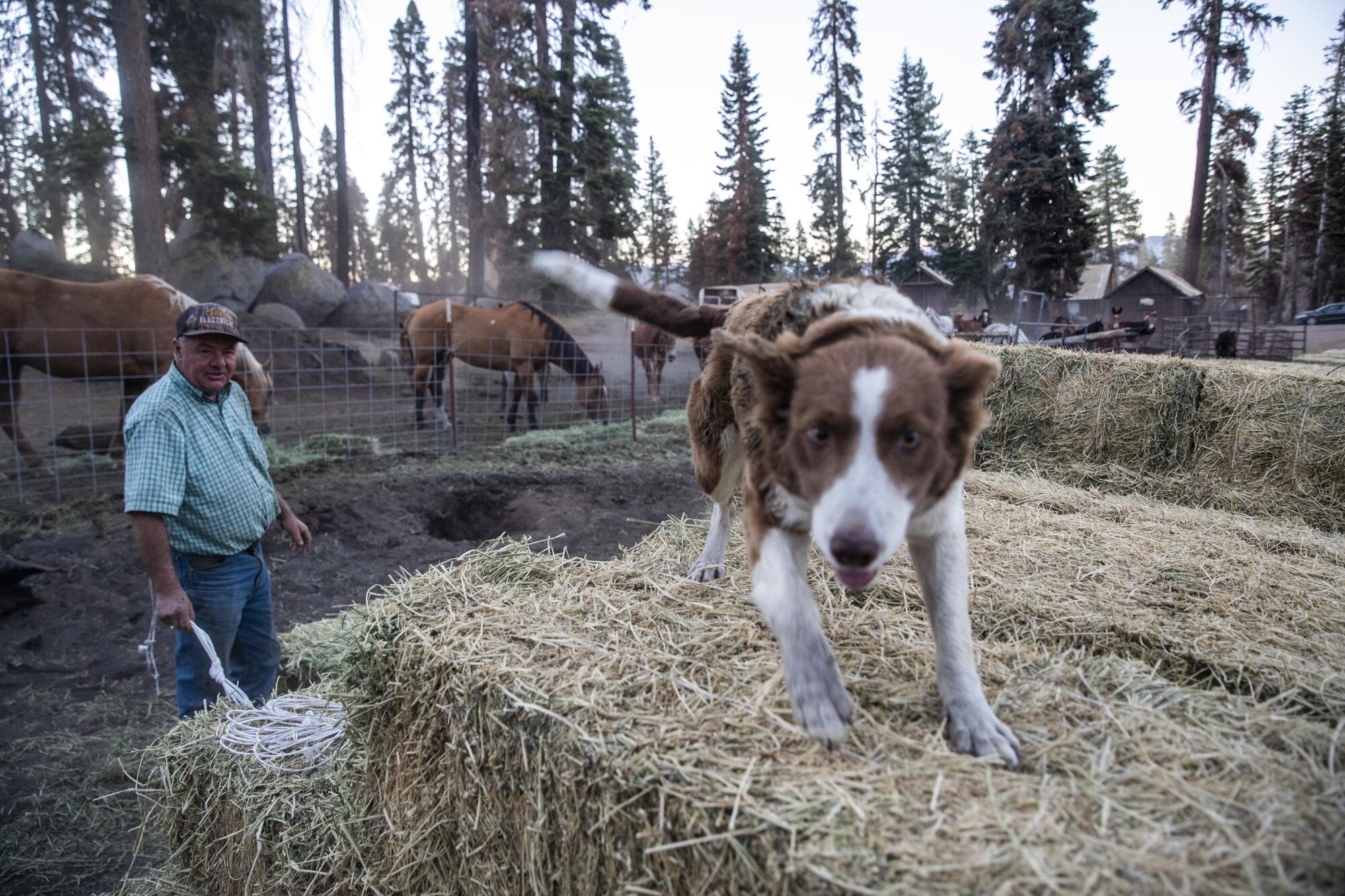
I was up at daybreak, but the wranglers awoke two hours earlier to feed the livestock and then catch, brush and saddle the three horses and three mules chosen for our trip. I would be a party of one, having taken the place of a larger group that canceled at the last minute.
I felt awkward in the role of customer, standing idly as Chelsea and her younger sister, Correy McGlyn, fitted food, bedding and camp equipment into 75-pound packs, lifted them onto the saddle forks and snugged them down with ingeniously tied lash ropes.
As we descended toward the Little Kern River, I soon beheld the southern extension of the Great Western Divide, that string of treeless peaks that forms the western parapet of the Kern gorge.
The yellow Angora Mountain, the blanched twin Coyote Peaks and the purple cup of Farewell Gap, the source of the Little Kern River, filled me with flashbacks of awe and angst. When something went wrong in the backcountry — as it almost always did — and we’d reach our destination after dark, the Sierra’s most enchanting phenomenon would console me as the setting sun concentrated in a simultaneously shrinking and intensifying glow of fire before blinking out.
This time, I passed up the photo-op. My phone was turned off to preserve battery for our five-day trip. Besides, the picture in my memory was more striking.
There would be no line to the outside. In that way, I was again confronting a fact that had not changed since I first faced it 60 years ago. If something went wrong, we would deal with it on our own.
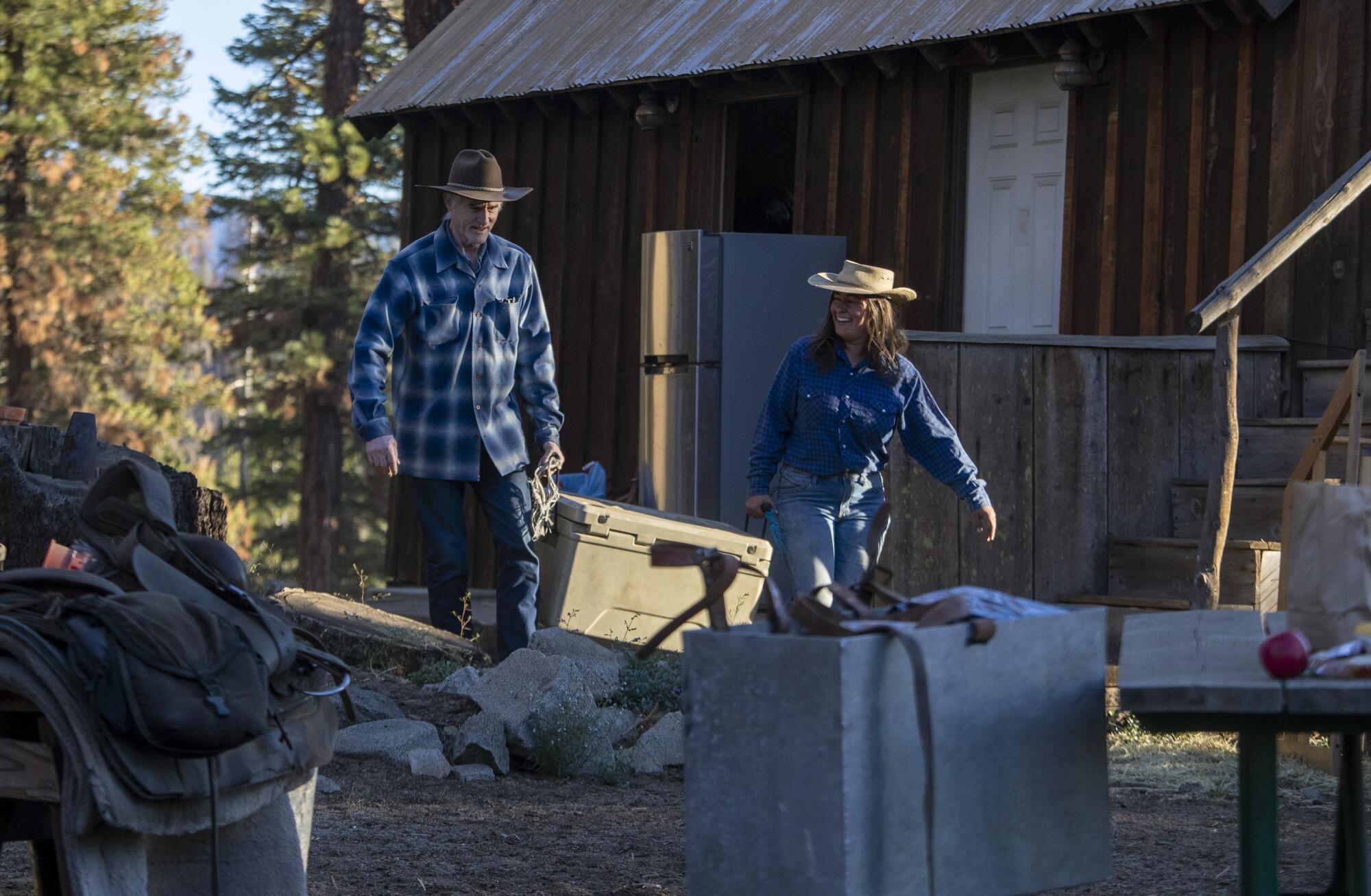
Four hours in, my creaking knees needed a rest. I dismounted to walk a mile through Willow Meadow, a narrow passage of ascending flatlands cupped in granite slopes. It was a decision I did not then realize would cause that inevitable something going wrong. At the time, my attention was on a carpet of yellow flowers highlighting a field of perpendicular black lines, the mast-like trunks of dead, burned tamarack pine.
“A different type of beauty,” Chelsea said, repeating the line of stoic philosophy that had become a kind of mantra for the pack station.
We crested the canyon, began a steep descent toward the Kern River and met an inconvenient ramification of wilderness status. The chainsaw, once the trail crew’s indispensable companion, has been banished along with trail machines. Consequently, tree trunks as big around as lasso loops lay on the trail where they had fallen over the winter.
The Forest Service long ago abandoned routine maintenance of these trails, leaving that duty to volunteers. Golden Trout’s packers had worked the trails until the Castle fire destroyed their two-man saws.
So this year, renegade trails have been blazed around the windfalls, one lurching 30 feet or so down a rockslide, then back up the bank. Horses can’t complain, but they groan. Riders contort. Mules endure.
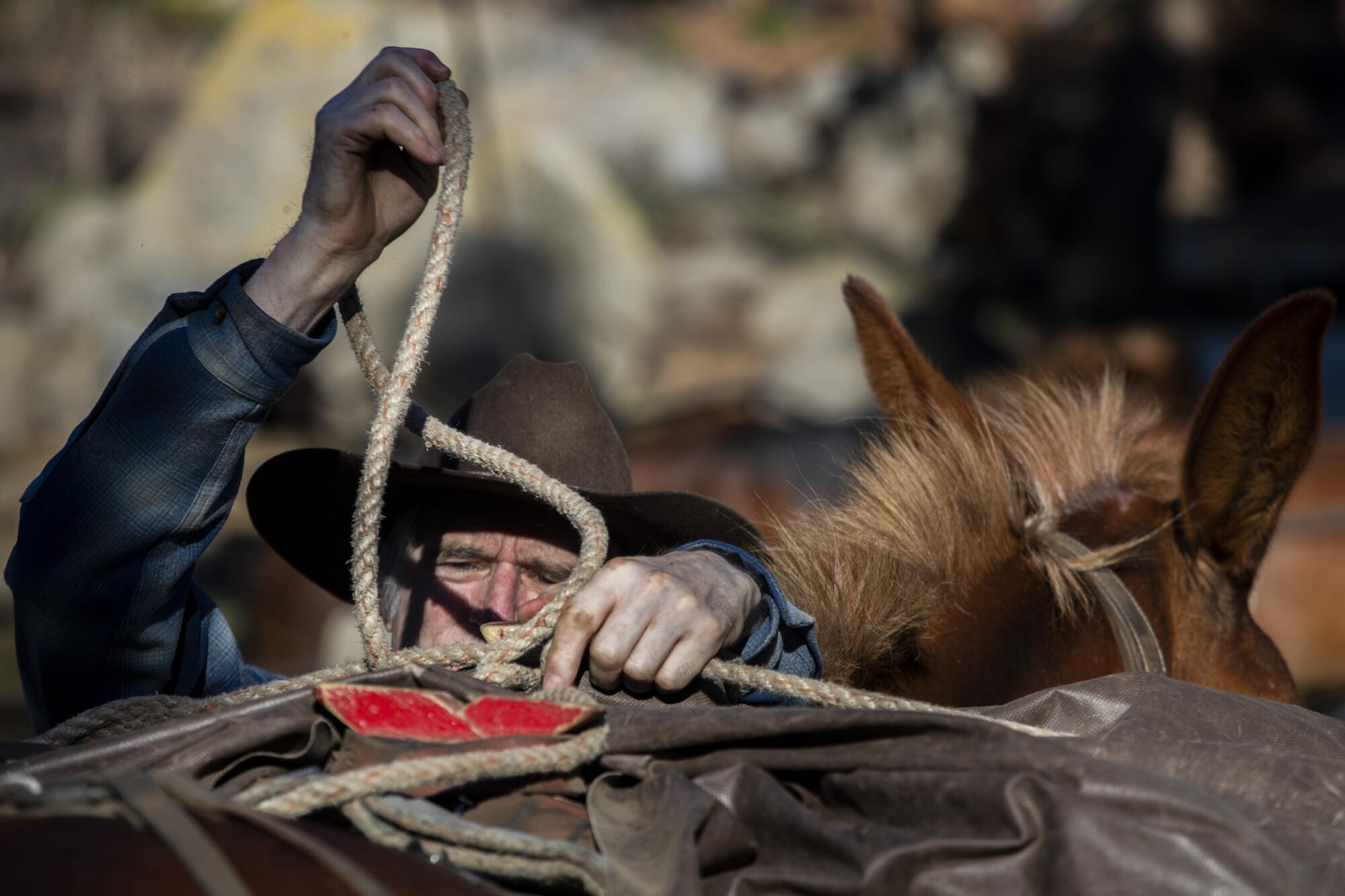
As we worked our way toward the Kern River, a different kind of beauty began to reveal itself. The Castle fire, or other lightning fires before or after, had encountered a habitat that resisted them. Individual trees were blackened and dead but others partly blackened and still alive. The dead became fewer and fewer, gradually outnumbered by the living forest.
Two more hours and we reached the Devil’s Stairway, an 800-foot climb around an ancient rockslide that created Little Kern Lake, an emerald oval that appeared below us as we topped the ridge. In my mind it should have been azure. Had the warming climate spawned an algae bloom or was it only faulty memory?
With that question lingering, we made one more climb over one more ridge to Big Kern Lake, our destination for the night.
Chelsea and Correy went to work unloading the packs and stripping off saddles. I wanted to help out but learned that lifting a 75-pound pack box with one hand while easing its leather straps off the saddle forks with the other was no longer within my capacity. So I watched.
Turned loose, the horses and mules went to the nearest patch of sand and rolled on their backs, kicking their legs upward in an exhibition that comes as close to pleasure as a thousand-pound animal can get. Then they disappeared into the willows toward the meadow where they would spend the night eating and where we would, we hoped, find them in the morning.
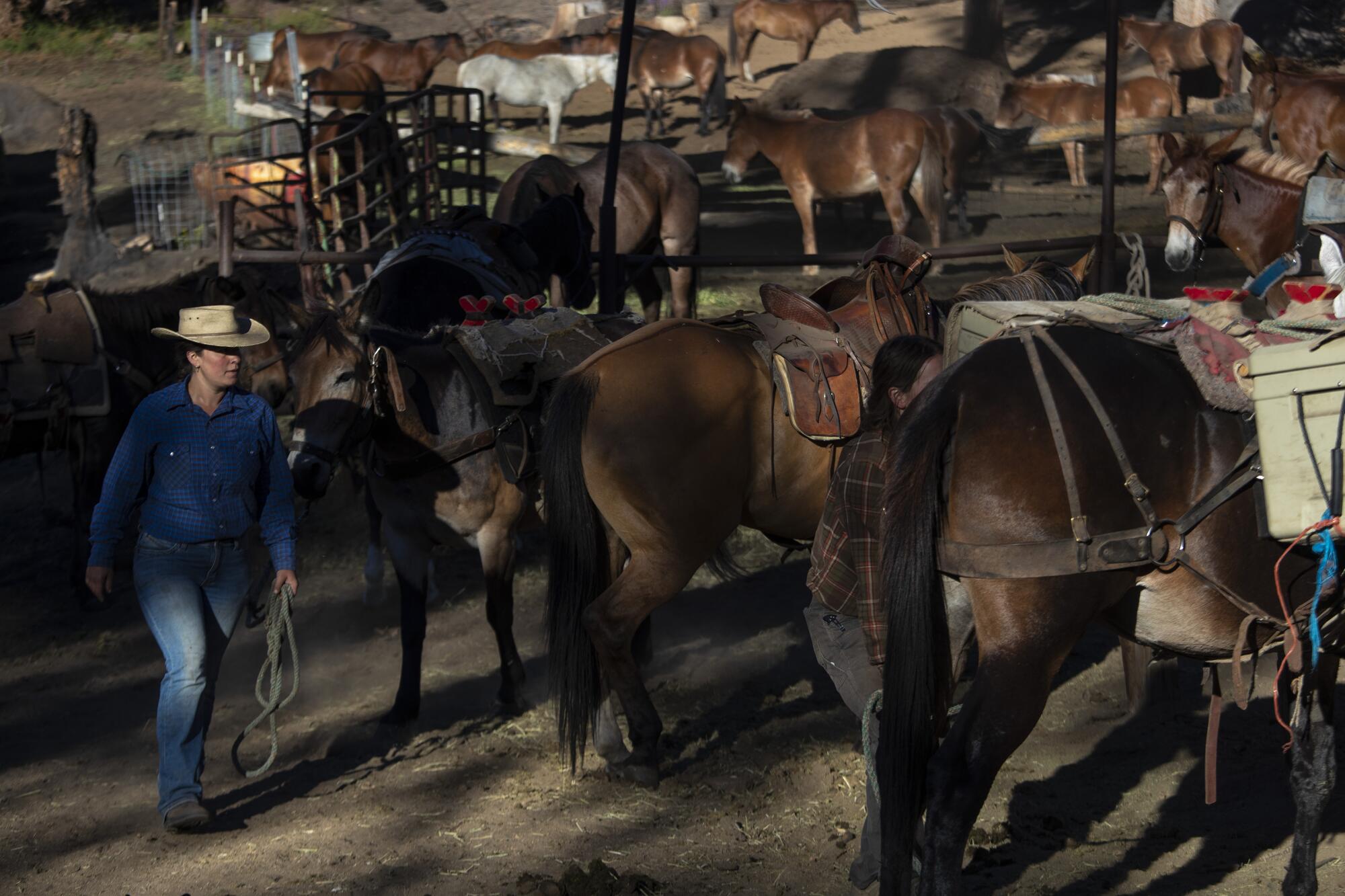
Some things had changed in the practice of packing, I was learning. For one, back then we were a society of men — a ragged lot of misfit adolescents and worn-out ranch hands.
The “girls,” as Day called Chelsea and Correy, had no inclination to the harsh animal husbandry those men had practiced. They managed just fine with sweet words and extra grazing time. Raised in a hamlet in upstate New York, they’re westerners by choice, not birth.
Besides introducing the ethos of women packers, Day had elevated the job to include the culinary arts. Their livestock chores done, Chelsea and Correy created a multicourse dinner of shrimp hors d’oeuvres, pasta alfredo, salad with a cranberry vinaigrette and dessert.
Back in the ’60s, the big parties from the San Joaquin Valley — Sterling Grant and the other Wasco farmers, the stockmen from Weed Patch and Metler, and the Shriners from Bakersfield — always came with an experienced backcountry cook, always a man, who would pack one mule with steaks on dry ice and another — for the gentlest mule — with whiskey.
By the dying glow of the campfire, I learned that Chelsea was in her third year packing. Correy, a recent USC graduate, had signed up as an apprentice.
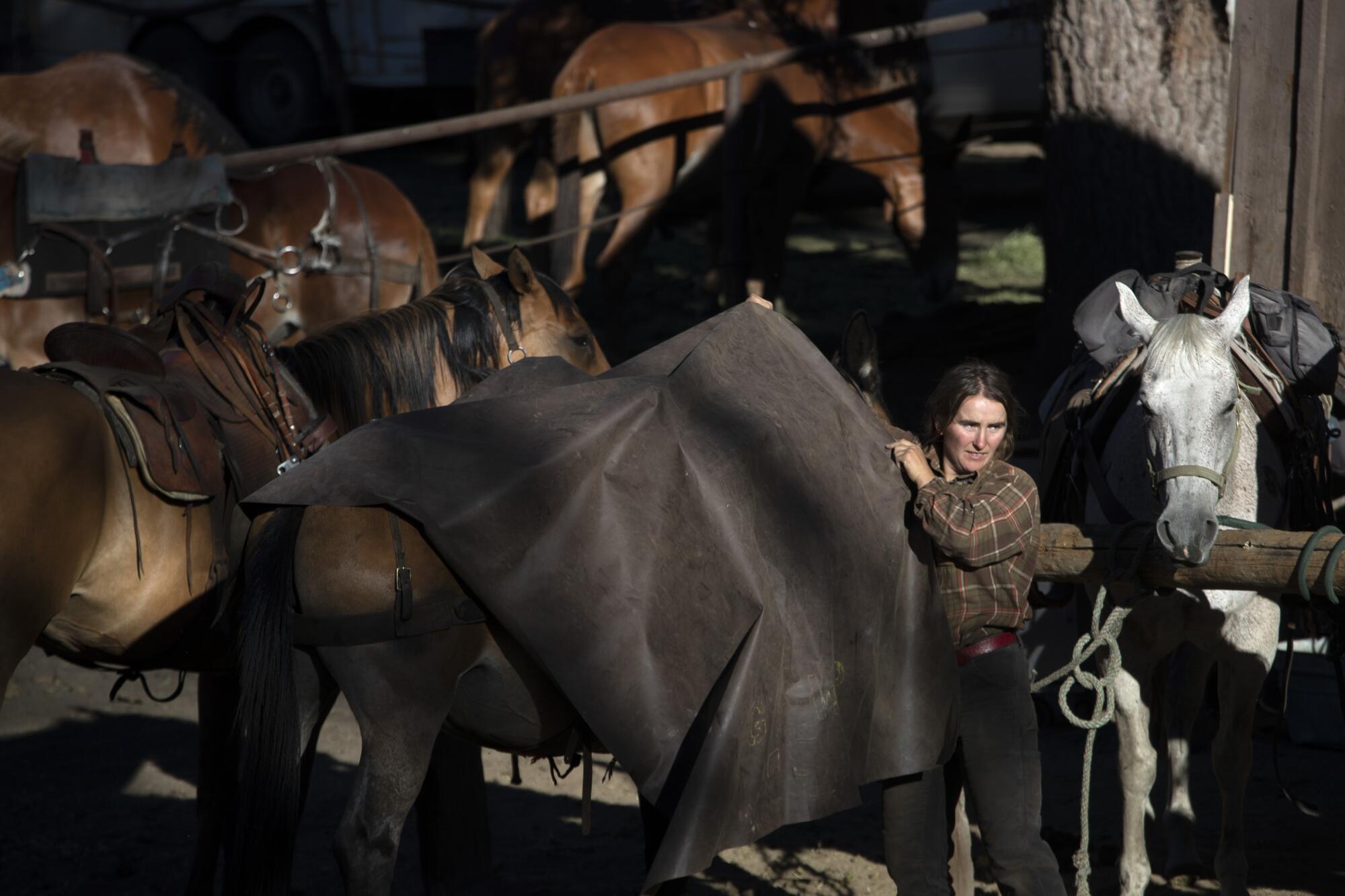
The fire was dying out, so I found a nearly level corner of camp and laid out two saddle pads to cushion my sleeping bag. A persistent mosquito forced me to cover my face with a shirt, denying the reprise of that most pleasant memory of fading off to sleep under the white swath of the Milky Way.
I slept soundly despite the rough bed, as fatigue overcame the inconvenience of oozing sores on the inside of both legs where the pull straps of my cowboy boots had worn away the skin while I walked — that something that always goes wrong.
It’s not El Capitan. I concede that. Its majesty is its own, communicable only to those who embrace, ever so distantly, the spirit of hardship and discovery that brought Jedediah Smith to these mountains almost 200 years ago.
— Doug Smith
In the morning, Chelsea offered me her clogs. But, dammit, some pretensions cannot be compromised. I wrapped spare socks inside the boot shafts to keep leather away from wound.
While Correy tended the mules, Chelsea and I rode on to the Kern Gorge where the emotional leg of my journey of remembrance would begin.
It came in small steps, not a revelation. First a deep blue pool beneath a granite outcrop that led up and away from the river. Then a half-mile vista of the Kern splashing straight toward us from around a bend. Reaching that bend we entered Sequoia National Park, crossed Coyote Creek and beheld Tower Rock in its most imposing posture.
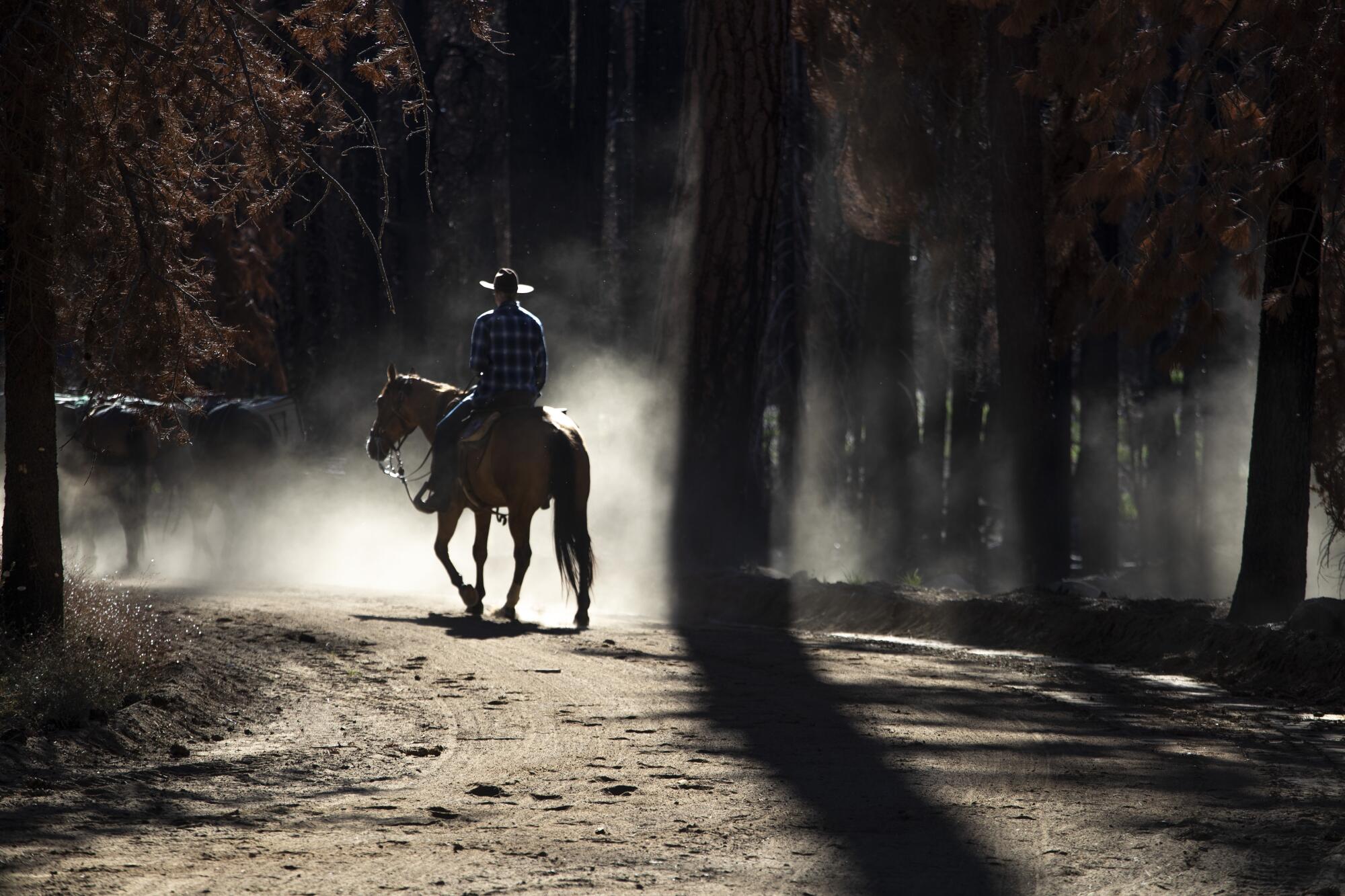
It’s not El Capitan. I concede that. Its majesty is its own, communicable only to those who embrace, ever so distantly, the spirit of hardship and discovery that brought Jedediah Smith to these mountains almost 200 years ago.
My infatuation with that seminal American explorer has faded with age, as has the cultural standing of mountain men like him who killed and ate their mules to complete their journeys, not to mention the human victims they left in their paths.
Even so, time has not diminished my wonder at the sight of Tower Rock. It is permanence. It is my touchstone in the universe, forever.
I watched its angles shift at the steady pace of a horse’s walk. Then it disappeared behind us as we continued to Funston Meadow. At last, Chelsea and I squeezed through the passage between giant boulders that marks the final approach to Funston, reviving the memory of my first trip there almost 60 years before:
That morning I caught my horse Poncho in a rising squall, rode him hunkered against a storm that turned the granite canyon walls an iridescent gray and came upon the agitated figure of Sterling Grant.
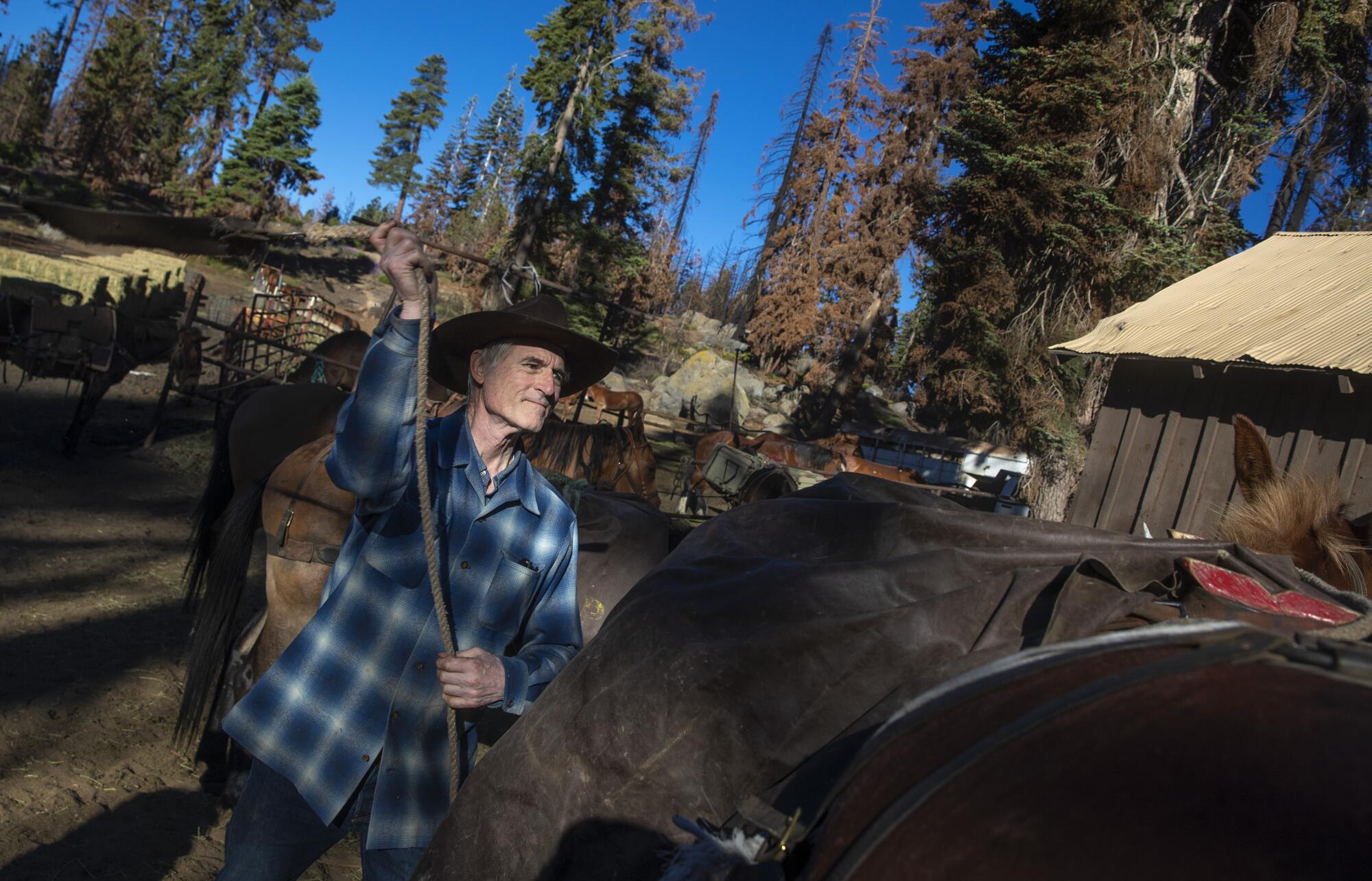
“Follow me,” he said. “My stock is across the river.”
I rode behind him to the river, which had risen to a threatening torrent.
“Go,” he said.
“What about you?”
“Don’t worry about me.”
I gave Poncho a kick, and we plunged in up to his knees. Taking one tentative step after another, feeling for steady footfalls, Poncho made his way to midstream.
At last confident that we would make it, I twisted in the saddle to ask Sterling what he wanted me to do on the other side.
He was right behind me, balancing himself in the current with a two-handed grip on Poncho’s tail.
Sterling and I became lifetime friends, over a distance. I worked for him one year, driving a D-4 Caterpillar on the fields of Wasco. I brought my own kids to explore his homestead that had by then been surrounded, to his chagrin, by the Armstrong Nursery’s fields of roses.
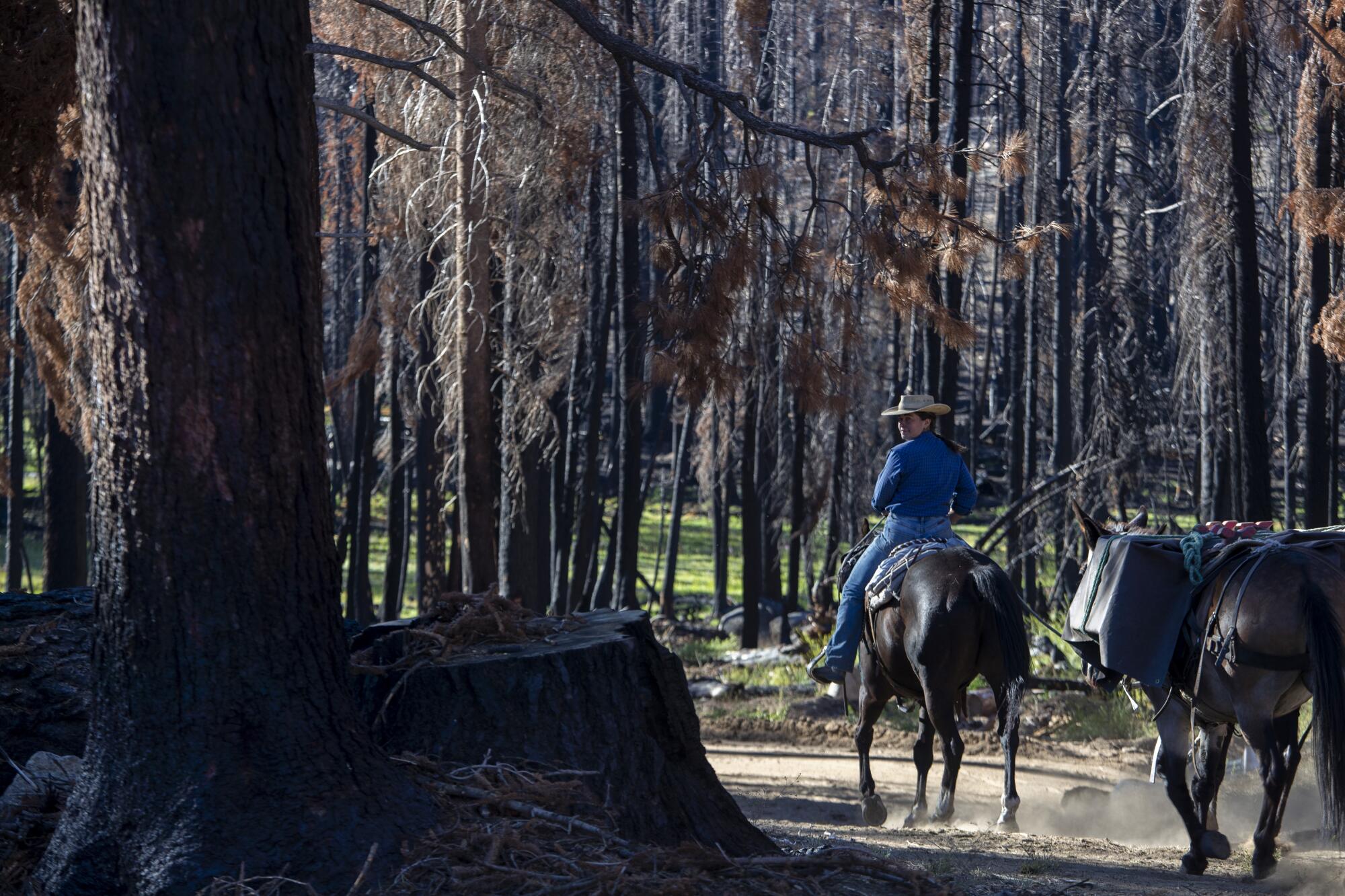
Sometime in the ’90s I was on assignment in nearby Taft and stole a few minutes to swing by the homestead. I sensed instantly that he was in a state of dementia.
We exchanged small talk with the politeness of strangers until I mentioned Funston.
His face changed.
“I held onto your horse’s tail,” he said.
That was the last time I saw Sterling.
There were so many others:
Doc — “I’m an Okie, California improved” — from the Bakersfield Shriners. Monty, the Taft High coach and backcountry cook extraordinaire. “Buy This” Ralph Smith, the Bakersfield Realtor who took, and survived, a bullet to the chest defending his family in a home invasion. And Frank Diger, the cemetery owner who had employed my Basque grandfather, Bakersfield’s best gravedigger.
They’re all gone now, and the physical reminders of my days as a mule packer are dwindling. When Chelsea and I finally reached where the campsite once stood in Funston, we found two singed bear boxes. The hitching rack, hewn-log tables, campfire ring and firebox all were gone as well. The effects of man are transitory.
That’s the thing about the Sierra — and perhaps about getting older. Things evolve, sometimes deteriorate. But some things won’t change in my lifetime and many lifetimes ahead, and there’s comfort in that. If I’m able, I’ll return next year to watch for signs of a recovering forest and, of course, to wonder at the grandeur of Tower Rock.
Watch L.A. Times Today at 7 p.m. on Spectrum News 1 on Channel 1 or live stream on the Spectrum News App. Palos Verdes Peninsula and Orange County viewers can watch on Cox Systems on channel 99.
More to Read
Sign up for Essential California
The most important California stories and recommendations in your inbox every morning.
You may occasionally receive promotional content from the Los Angeles Times.
